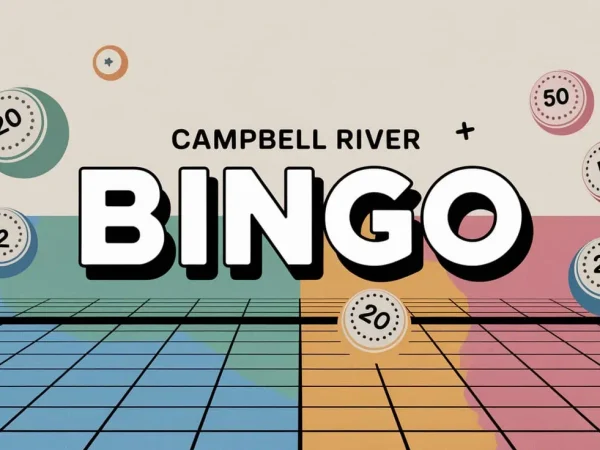Let’s be honest. Sometimes, the classroom can feel a little… predictable. The same routines, the same worksheets, the same hum of fluorescent lights. But what if you could inject a jolt of pure, unadulterated fun into your lessons? A spark that gets every hand in the air and every mind focused?
Well, you can. And it’s probably been sitting in your grandma’s game cupboard for decades. I’m talking about bingo.
Sure, it’s a staple of community halls. But beneath its simple surface lies a powerful educational tool. It’s a game of chance, sure, but also one of sharp listening, rapid recognition, and active participation. When you bring educational bingo games into your classroom, you’re not just playing—you’re transforming review sessions, vocabulary drills, and even complex concept lessons into something students genuinely look forward to.
Why Bingo Works: The Secret Sauce of Learning
You might wonder why a simple game is so effective. Here’s the deal: it’s all about psychology. Bingo is inherently motivating. The thrill of the chase, the hope of a win, the physical act of marking a square—it all combines to create a low-stakes, high-engagement environment.
Think of it like this: a vocabulary list is a static, silent thing. But a bingo card with those same words? It’s a battlefield. Each word becomes a target. Students are actively hunting for matches, processing information at lightning speed. This active recall is far more effective for memory than passive reading. It turns learning from a spectator sport into a full-contact intellectual activity.
Getting Started: Crafting Your Classroom Bingo Game
Okay, you’re sold. So how do you actually build a bingo game for the classroom? Honestly, it’s easier than you think. You don’t need fancy software or a big budget. Just a little creativity.
Step 1: Define Your Learning Objective
First, what do you want them to learn? Be specific. Are you reviewing parts of a cell? Practicing sight words? Drilling math facts? The entire game hinges on this. Every element should serve the objective.
Step 2: Create Your Cards and Call-Out Items
This is the core of your game. Instead of numbers, you’ll use your educational content. The key is to randomize the items on each card so no two students have the same layout. This prevents a cascade of winners and keeps the game competitive. You can use online bingo card generators or, you know, good old-fashioned copy-and-paste in a table.
| Subject | Bingo Square Content (Examples) | Call-Out Method |
| Math | Equations (5+7), Fractions (1/2), Shapes (“hexagon”) | Read the equation, show a shape, say the answer. |
| Language Arts | Vocabulary words, Literary terms (“metaphor”), Book characters | Give a definition, use it in a sentence. |
| Science | Elements (“Oxygen”), Parts of a plant, Scientific method steps | State the atomic number, describe the function. |
| History | Dates, Key figures, Vocabulary (“monarchy”) | Give an event, describe the person. |
Step 3: Establish the Rules and Play!
Will you play for a straight line? Four corners? A full card? Blackout? Decide beforehand. Explain the rules clearly. Then, start calling. The magic happens in the call-outs. Don’t just say the word. For a vocabulary word, give the definition. For a math problem, state the equation. This forces deeper cognitive processing.
Beyond the Basics: Creative Twists on Educational Bingo
Once you’ve mastered the standard game, you can start to get really creative. These variations can help you target different skills and keep the format feeling fresh.
1. Get Them Moving: Kinesthetic Bingo
Tired of students sitting all day? Create an interactive bingo game. Post answers or images around the room. You call out the question or clue, and students have to walk to the correct answer on their card and mark it. It’s a fantastic way to blend movement with learning.
2. Ditch the Paper: Digital Bingo
Leverage the tech you have. Use platforms like Google Slides or specialized apps where students can have digital bingo cards on their devices. It’s paperless, easy to manage, and feels instantly modern to them.
3. Student-Led Bingo
Flip the script. Have students create their own bingo cards based on a chapter they’ve read. Then, let them take turns being the caller. This is a powerful review activity—to create a good card or a good clue, they have to understand the material inside and out.
Real-World Classroom Applications
So where does this all fit? Honestly, almost anywhere. Here are a few concrete ideas that go beyond simple review.
- Icebreaker Bingo: At the start of the year, create cards with facts like “Has visited another country,” “Plays a musical instrument,” or “Has a pet.” Students mingle to find peers who match the descriptions. It builds community from day one.
- Listening Comprehension Bingo: Read a story aloud. The bingo cards contain words, names, or events from the tale. Students mark them as they hear them. It trains them to listen critically for specific information.
- Grammar Bingo: Cards have sentences with errors. You call out the type of error (“run-on sentence,” “misplaced modifier”). Students mark the square if their sentence contains that error. It turns dry grammar rules into a detective game.
The Winning Card
In the end, integrating bingo isn’t just about finding a fun Friday activity. It’s about recognizing that the structures of play are powerful learning architectures. The rustle of bingo cards, the focused silence as you read a clue, the triumphant shout of “BINGO!”—these aren’t distractions from education. They are its very essence. They are the sound of students engaging, competing, and, almost without realizing it, learning deeply.
It’s a small change, really. A simple game. But sometimes, the simplest tools can unlock the most complex understanding. So, what will you put on your first card?





